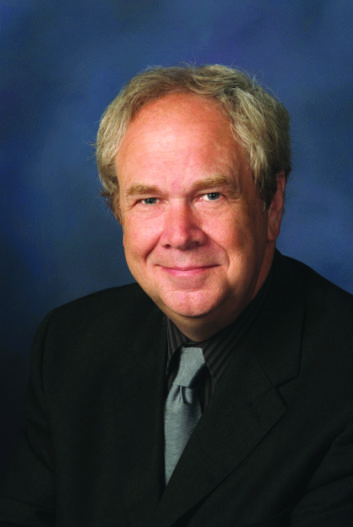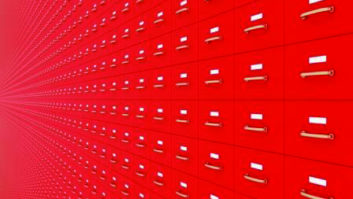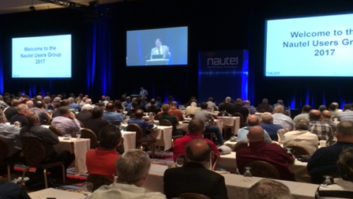 The author is vice president and general manager of Bryan Broadcasting in College Station, Texas, and was an early proponent of AM revitalization and the migration to FM translators. On March 25, Bryan petitioned the FCC to initiate a proceeding to authorize the MA3 all-digital mode of HD Radio for any AM station that chooses to do so.
The author is vice president and general manager of Bryan Broadcasting in College Station, Texas, and was an early proponent of AM revitalization and the migration to FM translators. On March 25, Bryan petitioned the FCC to initiate a proceeding to authorize the MA3 all-digital mode of HD Radio for any AM station that chooses to do so.
In September last year, Commissioner O’Rielly spoke to the NAB Radio Show and said the FCC hadn’t seen “game-changing innovation” around the AM revitalization initiative. And while the introduction of paired FM translators was a game-changer for operators, it’s no secret that this innovation mainly moved programming away from the hostile listening environment that the AM band has become without fixing the underlying problem of impossible noise.
Start a conversation about AM in any group of broadcasters and stand by for a flood of reasons to explain the band’s decline: Background noise and trash are the main reasons followed by poor quality receivers.
At this late date in the AM revitalization process there’s only one option that addresses the problems that still face operators on the AM band. AM licensees must be allowed the option to convert their stations to full digital.
THE NOISE IS GONE
The HD Radio hybrid system that we are allowed to use today was always intended to be a temporary system to hold our place in the digital line while HD Radio receivers arrived in the market.
In this case, this “patch” may have done a good bit of damage to the perception of digital. As it’s implemented today, it sounds great; but it is a fragile RF product, prone to dropouts, and it uses a lot of occupied bandwidth. These concerns are mostly addressed by the MA3 all-digital mode of HD Radio.
Our WTAW(AM) is one of the few AM HD stations. And it sounds great even in the current hybrid, rather than all-digital, mode. We program mostly talk, but any music plays in stereo, voices are far clearer and most important, the noise from my home computer, lights and phone charger is gone. The station has a sound as clear as AM was in the beginning but with better audio fidelity.
An important point: If a car has an HD FM radio installed, that radio will receive the all-digital AM signal. It was part of the original license and remains so today. You buy one version; you get them all.
But we need permission from the FCC to broadcast in all-digital AM. Hubbard’s Maryland AM WWFD has an experimental license to broadcast in all-digital. All reports indicate that the experiment is yielding the results they hoped for.
POINTS TO CONSIDER
As a thought experiment, make a list of the problems you think AM has, and let me argue my side why we only have one arrow in our quiver that fixes almost all of them:
AM has so much noise. It does. And as a practical matter, we’ll never get rid of it. The day has come and gone to clean up home lighting, TVs, computers and (help us!) phone chargers.
With conversion to all-digital, the noise will still exist … but it’s ignored by the radio. The result is a clean background for your programming. And maybe, just maybe, the car manufacturers who took AM radios out of the auto dashboard will put them back. The noise heard from their electronics will be eliminated.
AM radios are poorly made and sound awful. Most are and most do. But radios engineered with HD chips inside are of much higher quality, and that design is baked into the digital experience. If we present clean, perfect, digital sound … why would a manufacturer shut us down?
[Ebook: All-Digital AM Radio Starts Here]
It’s expensive to install: Again, that’s true. But it’s easier to install all-digital HD into a directional array than the existing hybrid HD system.
It’s subject to dropouts when the signal fades very low: This is how the digital world works. Indeed your phone does that at the fringes. But for in-town driving, WWFD finds their digital signal has performed much like their analog AM signal did. Remember, the HD hybrid model we have now is less robust than the all-digital.
There aren’t enough radios: And if we broadcasters don’t step up, there won’t be any listeners either. Every year more and more HD Radios are hitting the market. Can we say the same about AM listeners?
I’ll lose listeners when I switch. The beauty of the AM revitalization process was that it allowed us to pair our AM stations with FM translators. Your translator can carry the audience load while the audience becomes accustomed to all-digital AM.
TAKE YOUR MARKET BACK
There are always people who say poor programming damaged AM. I suppose that’s possible, but those choices were forced on us by radios that had such poor performance we were embarrassed to try to compete against FM music stations with what we had to work with.
When you convert to all-digital, you have a tool that allows you to pick any format, including music, and compete on quality and promotion just like AM once did.
It would be a tougher call, but in major markets without spectrum available for an AM to add meaningful FM translator coverage, this could be a brave first step that stops AM audience erosion in the big city.
HD Radio receivers in cars are at 25% total penetration, and over half of new cars sold today contain HD Radio. How could that not be a clear indication of the future?
AM all-digital HD fixes what we have wrong. David Layer and the NAB Pilot study shows that there are all-digital weak spots in special cases, but I believe that as long as you have an FM translator as your backstop, the day you convert to all-digital AM is the day you can begin to take your market back. The technology will be there to let you compete, and that’s really all we should ask.
Not only will your audience erosion stop, you’ll be breaking the new AM ground that the FCC is expecting from AM operators.
But first the FCC has to approve this change. We should ask them to do it.
The FCC is accepting statements opposing or supporting the Bryan Broadcasting petition through May 11. Refer to RM No. 11836 and the “Petition for Rulemaking to Allow the MA3 All-Digital Mode of HD Radio for AM Stations.”












